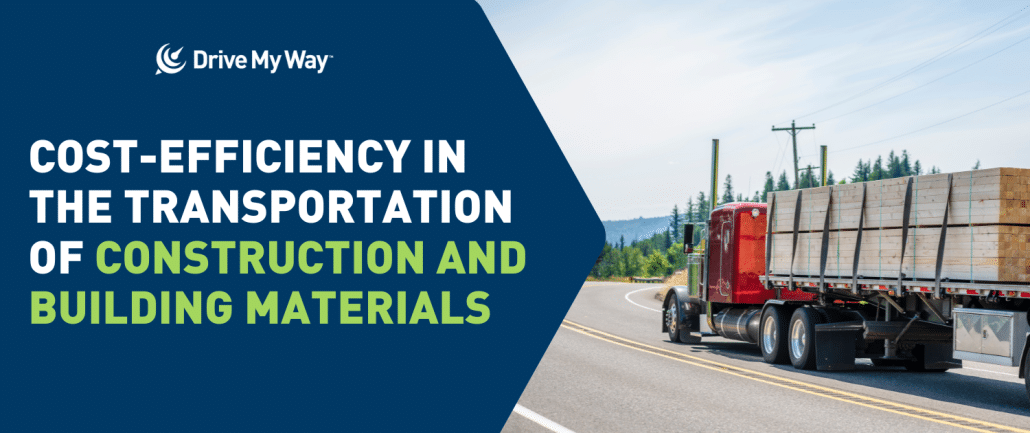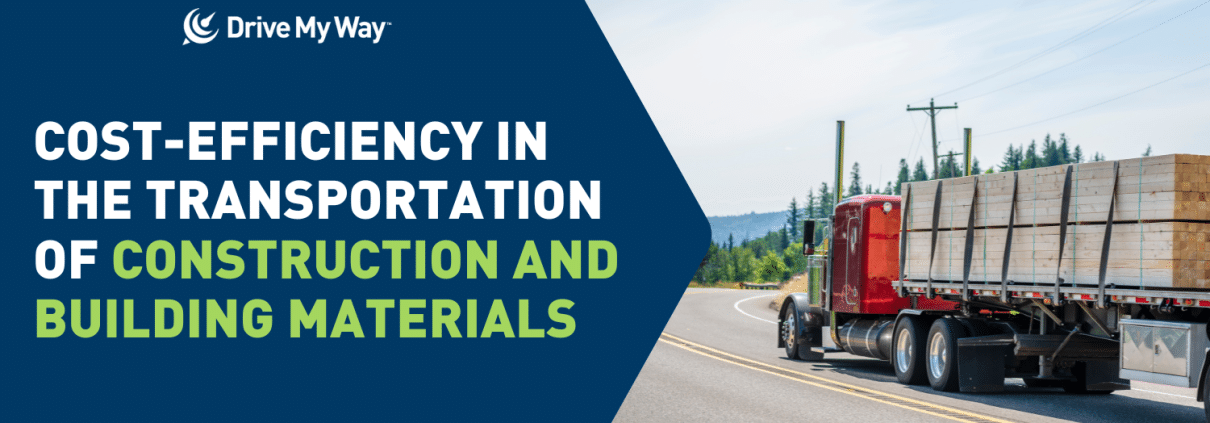
Transporting building products, such as lumber, steel, concrete, drywall, roofing materials, and prefabricated components, is a critical link in the construction and building materials supply chain. However, it’s also a complex and cost-intensive operation.
Fluctuating fuel prices, driver shortages, tight delivery timelines, and material fragility can all drive up costs and risk delivery delays. In an industry where profit margins are often tight and demand is high, companies transporting construction and building materials must prioritize cost-efficiency while maintaining service reliability and cargo integrity.
Through smarter logistics and improved fleet management, companies can significantly reduce their transportation expenses and provide more consistent service to their customers.
Understanding the Cost Drivers
To effectively reduce transportation costs, it’s essential to first understand the primary expenses involved in hauling construction and building products. These include:
1. Fuel and Mileage Costs
Fuel consistently represents one of the largest expenses in freight, often up to 40% of total operational costs. Since construction and building materials are often heavy and sometimes oversized, trucks burn more fuel per load. Delivery to job sites in urban areas or remote locations may also require extra mileage or idling.
2. Inspection and Permit Fees
Transporting oversized or heavy loads often requires permits and sometimes escort vehicles. States may also charge additional inspection fees for load compliance, weight restrictions, or bridge crossings. These costs can vary by state but add up significantly across regions.
3. Loading and Unloading Equipment
Cranes, forklifts, boom trucks, or specialized liftgates may be needed to load or unload heavy or oversized building products. Whether owned or rented, these machines require maintenance, skilled operators, and scheduling, which can all add greatly to the cost of operations.
4. Protective Equipment and Load-Specific Tools
Construction and building materials freight often requires additional cargo protection or securement resources, such as:
- Tarps and moisture-resistant covers for drywall or insulation.
- Steel racks, A-frames, or coil cradles for rebar, pipes, or glass.
- Straps, chains, padding, and corner protectors to prevent shifting and damage.
These supplies are consumable, and their replacement or damage adds recurring costs that may seem small but will add up quickly over time.
5. Driver Time and Labor
Loads may require more hands-on driver involvement, especially with materials that need frequent securing or checking in transit. Wait times at job sites, traffic in growing metro areas, and delays due to construction zones can also inflate hourly costs of drivers.
6. Vehicle Wear and Maintenance
Heavier loads accelerate wear on tires, brakes, and suspensions. Operating on unpaved or rugged job sites also increases the need for frequent maintenance and parts replacement.
Strategies to Reduce Transportation Costs
Understanding the unique expenses involved with transporting construction and building materials allows you to target key areas for savings, without sacrificing delivery reliability or product protection.
1. Optimize Route Planning to Reduce Mileage and Fuel Use
Using GPS-enabled route optimization software helps drivers avoid congested zones and unnecessary detours. Real-time updates account for traffic, weather, and road closures, which can cut down idling time and fuel use.
Find out more tips to optimize routers and increase fuel efficiency here.
2. Consolidate Shipments and Improve Load Efficiency
Many building products are bulky but not heavy (insulation or foam boards), while others are compact but dense (bricks or steel beams). Combining loads strategically, based on compatibility and weight distribution, maximizes truck capacity and reduces trips.
Use load planning tools, such as EasyCargo, to virtually map cargo layouts and reduce the number of partial or under-utilized runs.
3. Track and Minimize Equipment Costs
Inventory management of straps, pads, racks, and tarps can reduce losses and damage. Label and track gear, standardize use policies, and train drivers to inspect protective equipment for wear. These small costs can snowball if not monitored.
If possible, work with shippers or consignees to share responsibility for specialized loading/unloading gear to reduce reliance on carrier-owned equipment.
4. Preventive Fleet Maintenance
Proactively servicing trucks ensures better fuel economy and fewer breakdowns, especially under heavy loads and on difficult terrain. Digital fleet management systems can alert operators to early signs of mechanical issues, reducing downtime and costly emergency repairs.
Technology and Training to Support Cost-Efficiency
To maximize cost-efficiency, it is critical to leverage a combination of modern technology and driver training programs that enhance performance, reduce waste, and improve delivery outcomes.
1. Telematics and Real-Time Monitoring
Modern fleet management tools provide data on fuel usage, idle time, braking behavior, and tire pressure. This visibility allows for immediate interventions, like rerouting around delays or flagging trucks that need service.
2. Driver Training and Incentives
Educating drivers on fuel-efficient driving, such as avoiding hard acceleration, coasting to stops, and reducing idling, can have a significant impact on fuel use and overall operating expenses. Consider offering bonuses or milestone awards to promote safe and efficient driving habits.
3. Digital Load Documentation
Digital bills of lading, inspection logs, and permit management systems reduce paperwork errors and speed up regulatory compliance, which is particularly important for construction materials that cross state lines or fall under weight classifications.
4. Maintain Delivery Standards While Cutting Costs
For companies that transport construction and building materials, reliable deliveries are as important as cost. Late or damaged deliveries can stall entire projects and impact your company’s reputation. That’s why every cost-saving measure must be balanced with service quality. Focus on:
- Matching equipment to product types (such as flatbeds with moffetts for large pallets).
- Monitoring delivery time windows closely and ensuring effective communication between drivers, dispatch, and management.
- Offering load tracking and status updates to keep customers informed.
Reducing the cost of transporting building products isn’t just about spending less, it’s about managing resources more strategically.
Drive My Way addresses your unique challenges and secures skilled hires for your construction and building materials operations. Schedule a call today to learn more!





